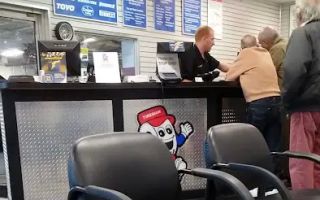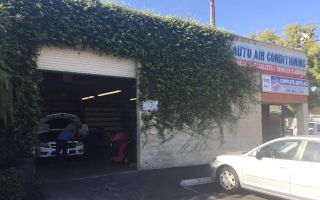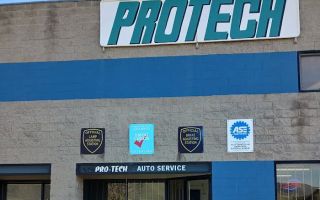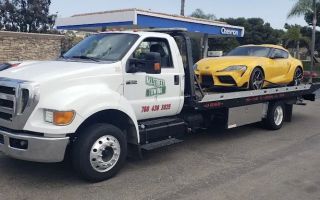How to Prevent Battery Failure in Cold Weather: Essential Tips for Drivers
1. Understanding Battery Failure in Cold Weather
Cold weather can have a significant impact on your vehicle’s battery. In fact, the majority of battery failures occur during the winter months, when the temperature dips below freezing. When temperatures drop, the chemical reactions inside your car’s battery slow down, reducing its ability to hold a charge. This can result in slow starts, or in the worst case, a complete battery failure that leaves you stranded.
Take the case of John, a driver in Minneapolis, who found himself stuck in the snow one early morning. His car wouldn’t start despite several attempts. After calling a towing service for emergency help, he learned that his battery had failed because of the frigid temperatures. John's experience is not unique, as cold weather tends to exacerbate existing battery problems, especially in older vehicles. Understanding how cold weather affects your battery can help you take proactive steps to prevent a similar situation.
2. Signs of Battery Issues in Winter
Before your battery fails completely, there are often signs that it’s struggling, especially in cold weather. These signs can help you prevent a breakdown and allow you to get professional help before it's too late. Here are a few common warning signs:
- Slow Engine Crank: When you try to start your car and hear a sluggish or slow engine crank, it could indicate that your battery is weakening.
- Check Engine Light: A lit check engine light can sometimes be a signal that the battery is not functioning properly.
- Corrosion on Battery Terminals: If you notice a white, powdery substance around the battery terminals, this is corrosion, which can affect the battery’s performance.
- Low Battery Voltage: If you have a voltage tester or multimeter, you can check the voltage of your battery. A healthy battery should read about 12.6 volts or higher.
If you experience any of these symptoms during the colder months, it’s a good idea to take your vehicle to a mechanic or a roadside assistance service like Rescue & Towing for a quick check-up. Addressing these issues early can save you from getting stuck in freezing temperatures.
3. Preparing Your Battery for Cold Weather
Preventing battery failure starts with proper preparation. Here are several proactive steps you can take to ensure your car's battery is ready for the winter months:
- Check the Battery Health: Get your battery tested at least once a year, especially before the onset of winter. Many auto parts stores offer free battery testing to assess its condition and charging capacity.
- Clean the Battery Terminals: Clean any corrosion from the battery terminals using a solution of baking soda and water. This helps ensure a good connection and prevents issues caused by corrosion.
- Install a Battery Insulation Kit: Consider installing a battery insulation kit to help protect your battery from extreme temperatures. These kits are available at most auto parts stores and can prevent the cold from affecting your battery’s performance.
- Replace an Aging Battery: If your battery is over three years old, it may be time to replace it. Cold weather can be the final straw for an already struggling battery, and getting a new one can avoid a lot of inconvenience.
Properly preparing your vehicle’s battery for cold weather can be the difference between a smooth winter driving experience and an unexpected emergency. If you’re unsure of your battery’s condition, don’t hesitate to call a towing or rescue service like Rescue & Towing to get it checked.
4. What to Do If Your Battery Fails in Cold Weather
Even if you take all the necessary precautions, a battery failure in cold weather can still happen. If you find yourself stuck with a dead battery, here are some steps you can take to deal with the situation:
- Attempt a Jump Start: If you have jumper cables and access to another car with a working battery, you can try jump-starting your vehicle. Make sure to follow proper safety procedures to avoid damaging your electrical system.
- Call for Roadside Assistance: If you don’t have jumper cables or the jump start doesn’t work, contact a reliable towing service or roadside assistance provider like Rescue & Towing. They can send someone out to help with a battery jump-start or even provide a tow to a nearby mechanic.
- Stay Safe: In the cold, it’s crucial to stay warm and safe while waiting for assistance. Always keep a blanket, some snacks, and water in your car in case of an emergency, and make sure your phone is charged.
Don’t let a battery failure ruin your winter. Having the contact information of a trustworthy towing service can give you peace of mind, especially during the colder months when you might be more vulnerable to unexpected breakdowns.
5. Choosing the Right Towing Service
When it comes to towing services, not all companies are created equal. It's important to choose a reliable and professional service provider who can assist you quickly when your battery fails in cold weather. Look for a towing company with experience in handling winter weather breakdowns and a reputation for prompt and professional service. Rescue & Towing is one such service that offers 24/7 emergency towing and roadside assistance to drivers in need.
Additionally, make sure the towing company offers services such as battery jump-starts, fuel delivery, and flat tire repair, which are crucial in winter months. A towing service that offers a variety of assistance options can be a lifesaver when you're stranded in the cold.
If you're concerned about battery failure during the cold months, take the necessary precautions to prevent it. However, if you find yourself stuck, remember that reliable help is just a phone call away. Visit Rescue & Towing for more information on their services or to schedule a winter readiness check for your vehicle today.


























